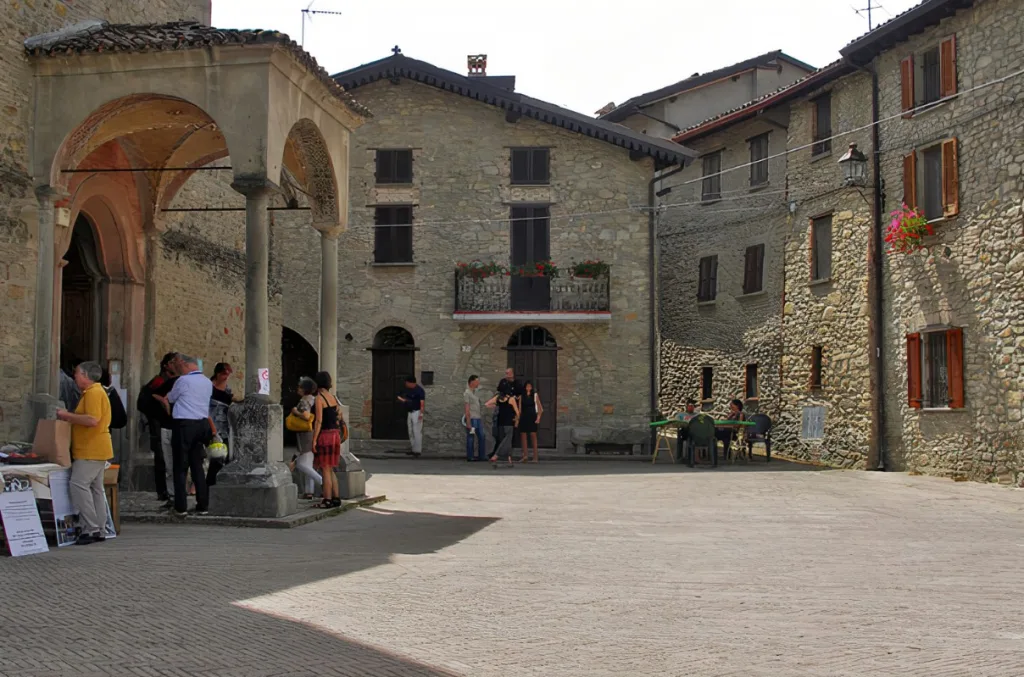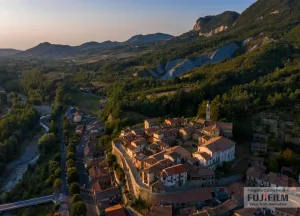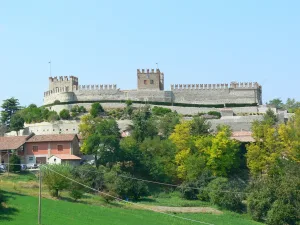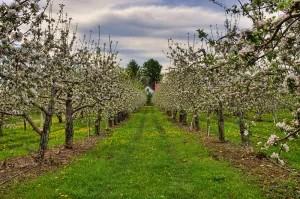Once an autonomous municipality, now part of Ponte Nizza, San Ponzo Semola lies on the left bank of the Staffora stream. The village, which belonged to the Bishops of Pavia and later to the Cesarini Sforza family, preserves a small treasure: the Church of San Ponzo, declared a National Monument. Although it was renovated in the 15th century, the building still preserves architectural elements that testify to its medieval origins. Inside, traces of 16th and 18th century frescoes can be admired, offering a fascinating insight into the rich artistic tradition of the period. The church is further embellished by the baptismal font, which dates from 1161.
The village of San Ponzo
San Ponzo has the ability to take the visitor back in time, immersing them in a medieval atmosphere full of charm and mystery. Walking through the cobbled streets lined with stone houses is like stepping into a living painting. And of being part of it.
A Romanesque jewel
The Church of San Ponzo is a building of great architectural and historical value. Built in the Lombard Romanesque style, it has certain elements that make it unique and fascinating.
The façade is characterised by a portal preceded by a Renaissance portico with a square plan and a cross vault supported by four columns on sandstone bases.
The external pavement is made up of cobblestones decorated with terracotta.
The bell tower
The bell tower of the church has a square shape and louvered windows with semicircular arches. A white marble slab with the inscription 'Monumento nazionale architettura lombarda sec. XI' (National Monument of Lombard Architecture of the 11th century), on the façade of the bell tower, testifies to the historical and artistic value of the building.
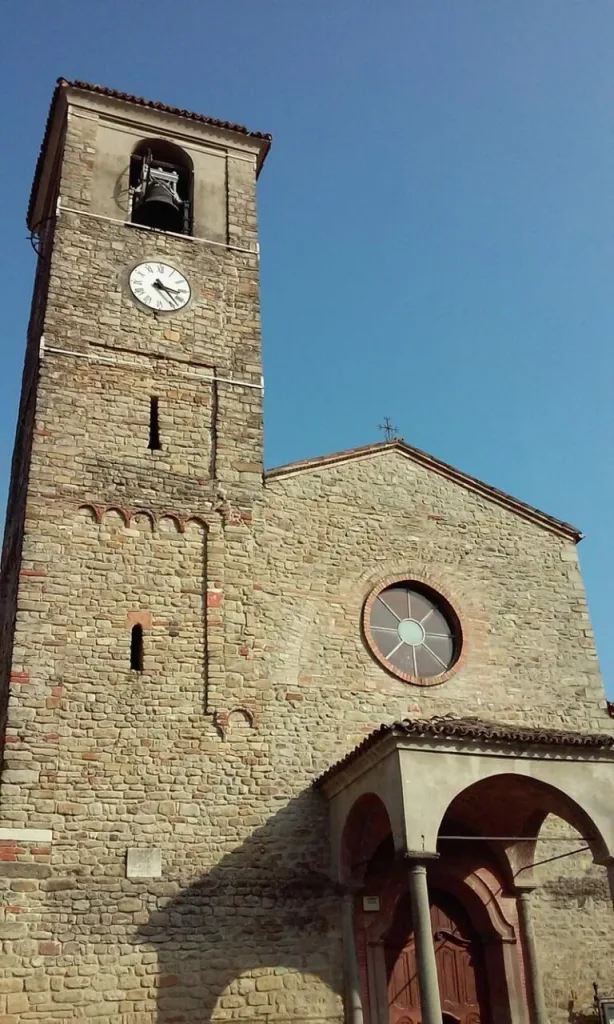
The fascinating interior of the Church of San Ponzo
Once inside the Church of San Ponzo, it is possible to admire numerous elements that add to the beauty and historical value of the building, with its millenary traces.
In the first niche on the right, immediately after the entrance, there is the baptismal font. In the past, the baptistery was a chapel outside the church, accessible through a door, the outline of which can still be seen from the outside, to the right of the entrance portal. In the fourth bay on the right, in the middle of the perimeter wall, there is a small raised niche.
To the right of the presbytery, in a rectangular space, there is the altar dedicated to San Ponzo, with an urn containing the remains of the saint. Above the altar, in a niche, there is a statue of San Ponzo. On the raised level of the counter facade is the organ.
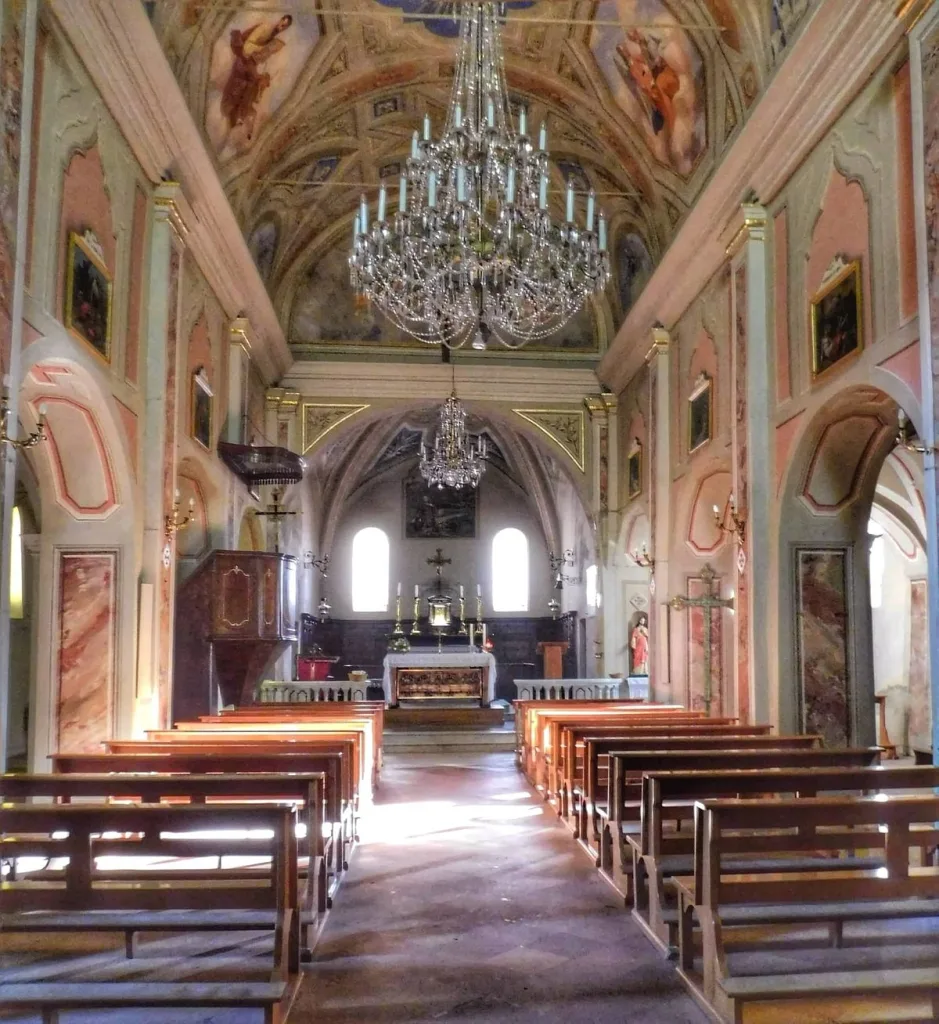
The altar of San Ponzo
The architectural and decorative elements of the Church of San Ponzo contribute to the solemnity of the building. Details such as the baptismal font, the niches and the altar dedicated to San Ponzo are steeped in history.
A hidden treasure not far away
About three kilometres from the village, in the direction of monte Vallassa, are caves naturally hollowed out by the action of atmospheric agents. They are said to have been inhabited by Saint Ponzo in the 3rd century.
The figure of the saint is shrouded in stories and legends that have been passed down over the centuries. It is said that the caves were where St Ponzo spent his life as a hermit, devoting himself to prayer and contemplation. The water that once gushed from these rocks was attributed prodigious virtues.





